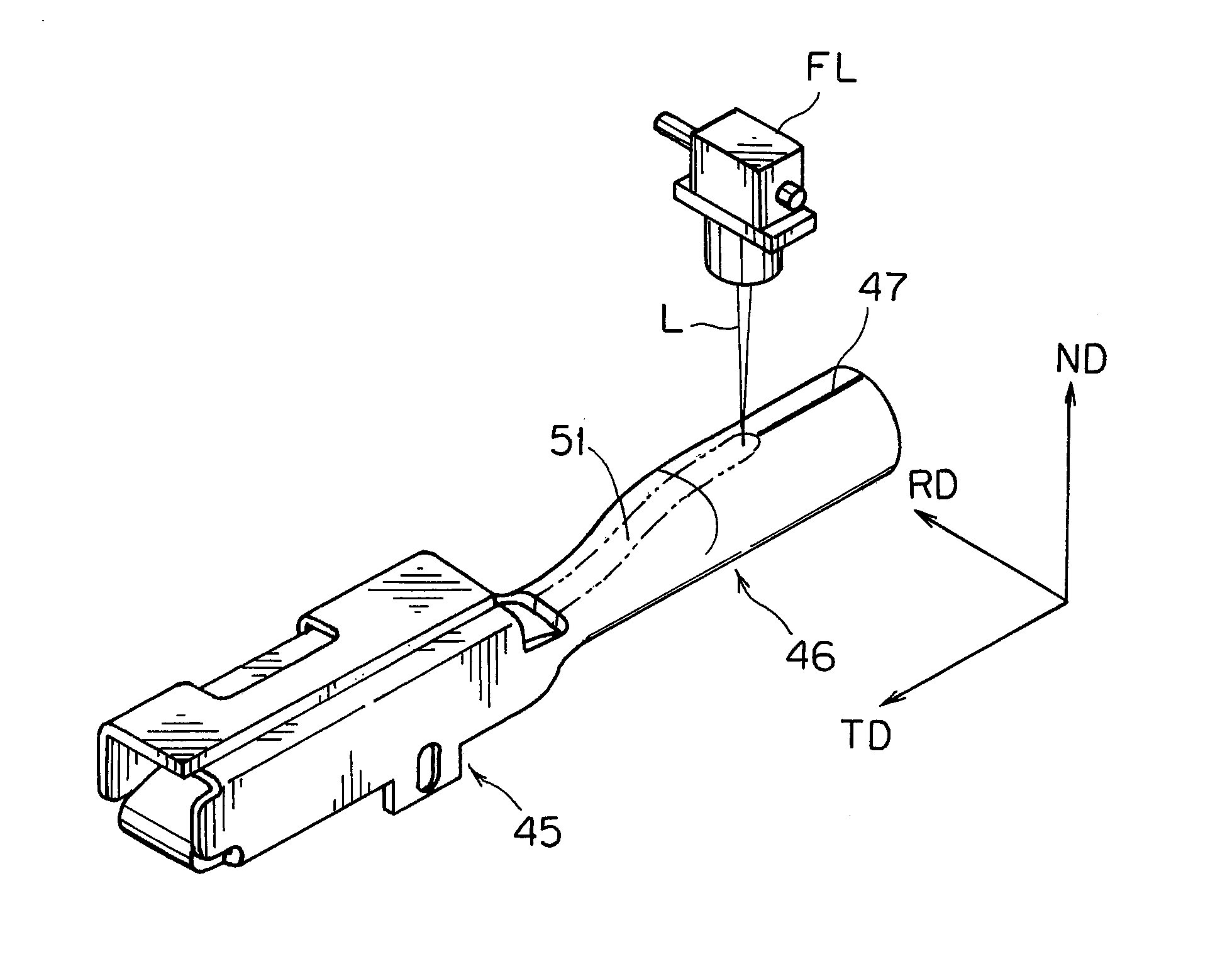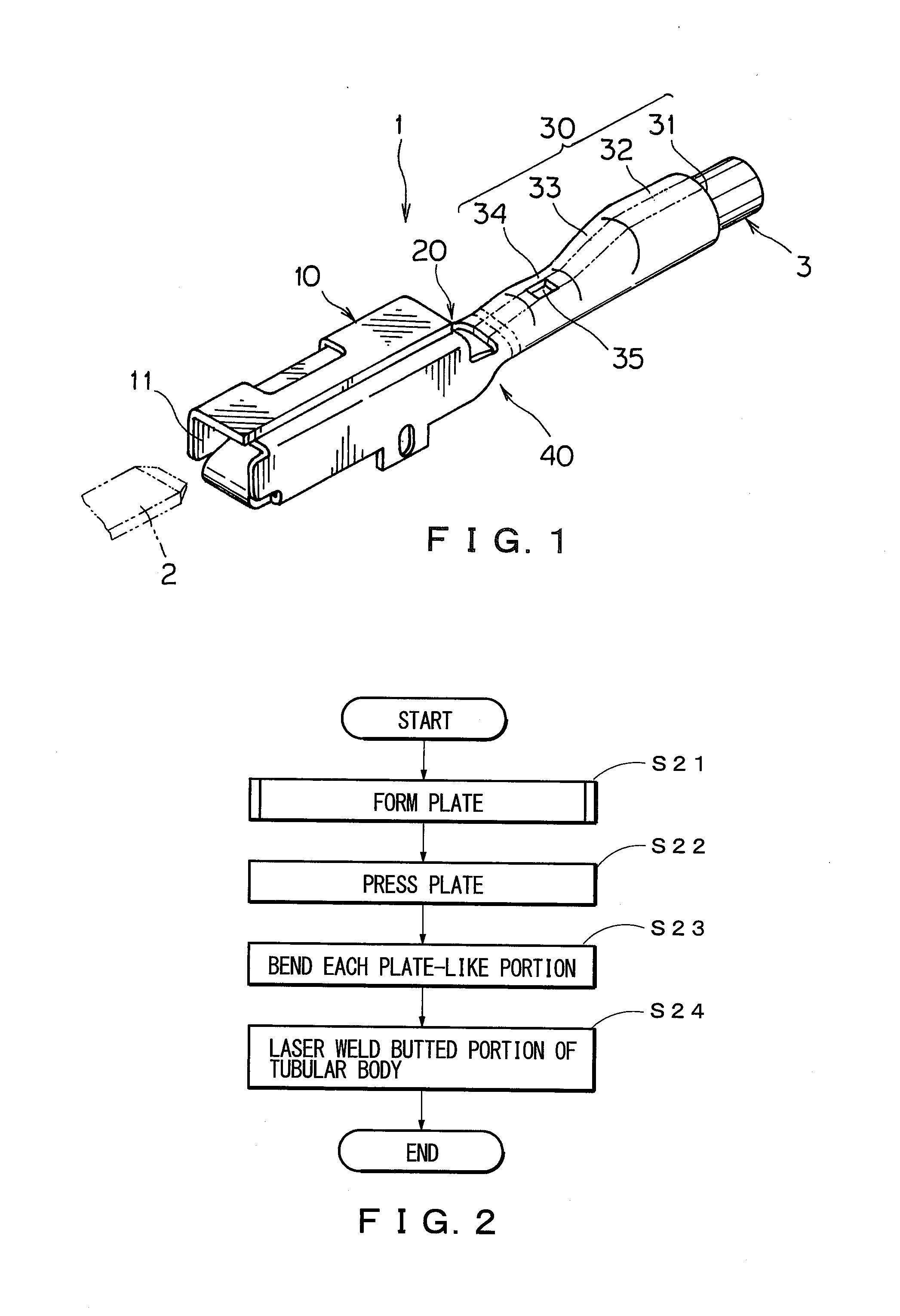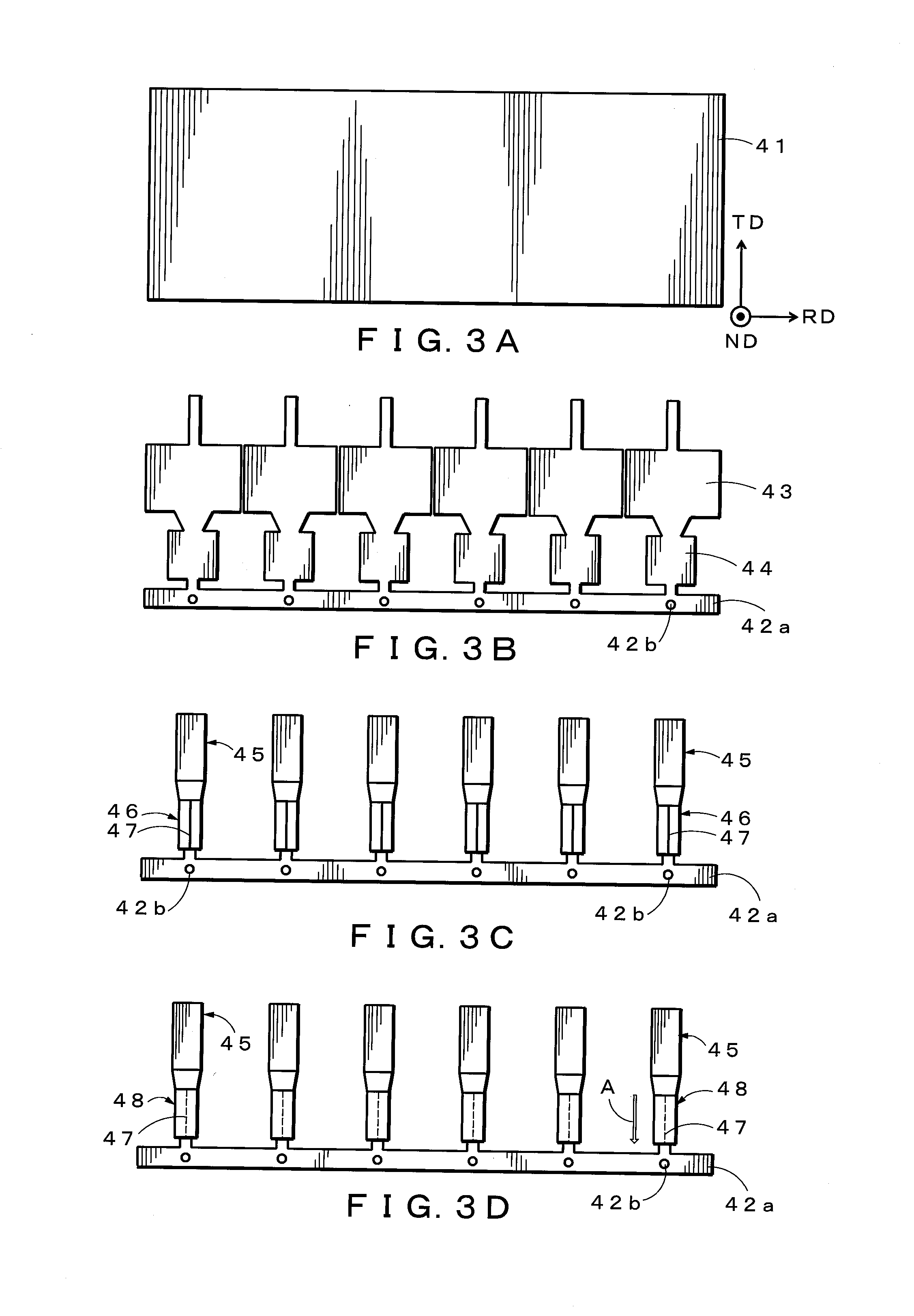Terminal, Wire Connecting Structure and Method of Manufacturing A Terminal
a technology of wire connecting structure and manufacturing method, which is applied in the manufacture of contact member materials, coupling contact members, and material of connection contact members, etc., can solve the problems of large increase in the manufacturing process of wire harnesses, inability to miniaturize or have a higher density of wire harnesses, and inability to meet the needs of the customer, so as to reduce the width and reduce the width
- Summary
- Abstract
- Description
- Claims
- Application Information
AI Technical Summary
Benefits of technology
Problems solved by technology
Method used
Image
Examples
example 1
[0062]Using a Cu-2.3% Ni-0.6% Si-0.15% Sn-0.5% Zn-0.1% Mg alloy, a plate was fabricated with process I described below.
example 2
[0063]Using a Cu-0.27% Cr-0.25% Sn-0.2% Zn alloy, a plate was fabricated with process I described below.
example 3
[0064]Using a Cu-0.15% Sn-trace amount P alloy, a plate was fabricated with process II described below.
[0065]Process I: Casting→heat treatment (600° C., 5 h)→heat to 850° C. and perform hot rolling (rolling reduction 83%)→cold rolling (rolling reduction 95%)→solution (825° C., 15 s)→aging treatment (460° C., 2 h)
[0066]Process II: Casting→heat to 800° C. and perform hot rolling (rolling reduction 83%)→cold rolling (rolling reduction 92%)→recrystallization process (400° C., 2 h)→finish rolling (reduction 40%)
PUM
| Property | Measurement | Unit |
|---|---|---|
| thickness | aaaaa | aaaaa |
| thickness | aaaaa | aaaaa |
| diameter | aaaaa | aaaaa |
Abstract
Description
Claims
Application Information
 Login to View More
Login to View More - R&D
- Intellectual Property
- Life Sciences
- Materials
- Tech Scout
- Unparalleled Data Quality
- Higher Quality Content
- 60% Fewer Hallucinations
Browse by: Latest US Patents, China's latest patents, Technical Efficacy Thesaurus, Application Domain, Technology Topic, Popular Technical Reports.
© 2025 PatSnap. All rights reserved.Legal|Privacy policy|Modern Slavery Act Transparency Statement|Sitemap|About US| Contact US: help@patsnap.com



